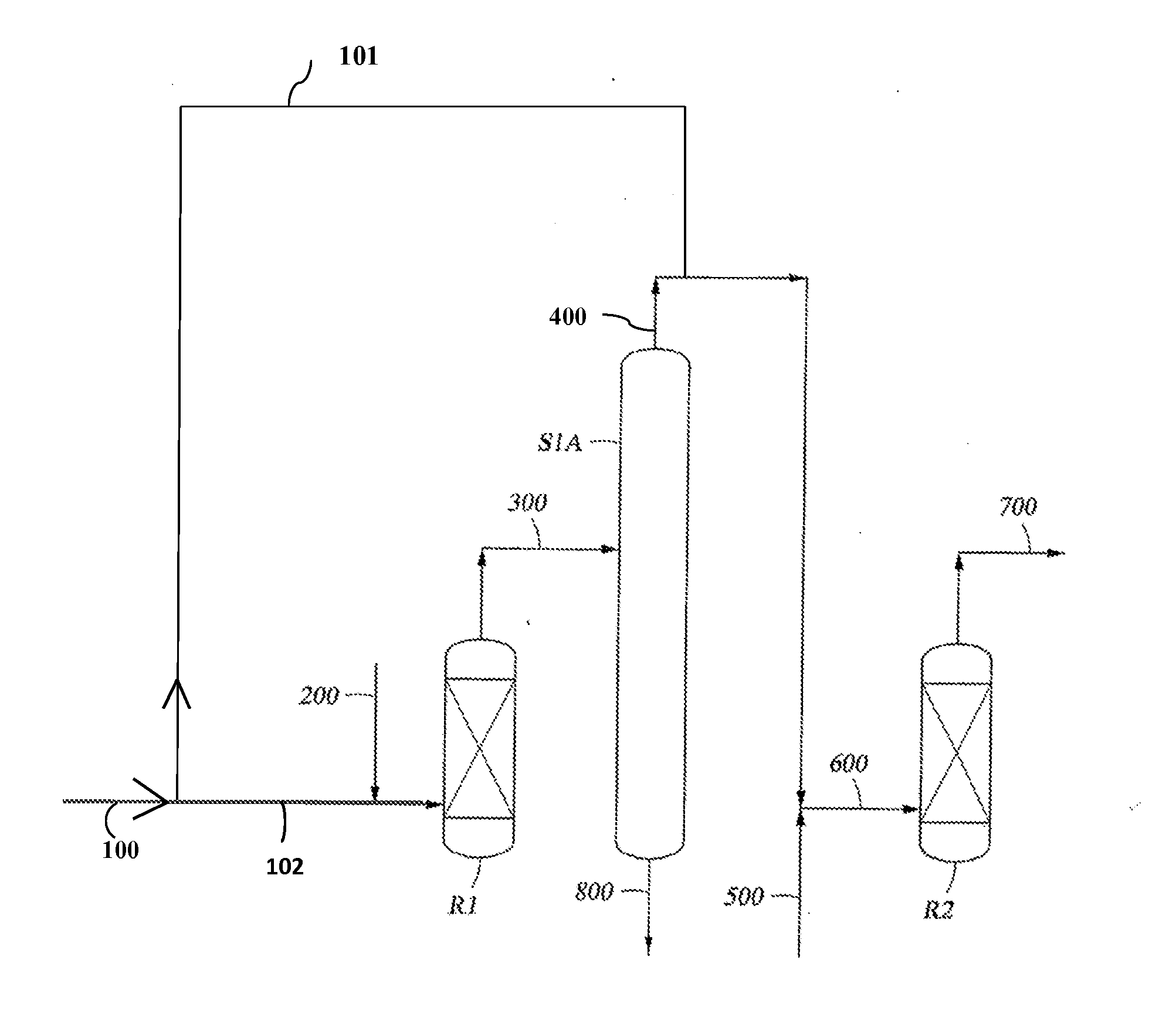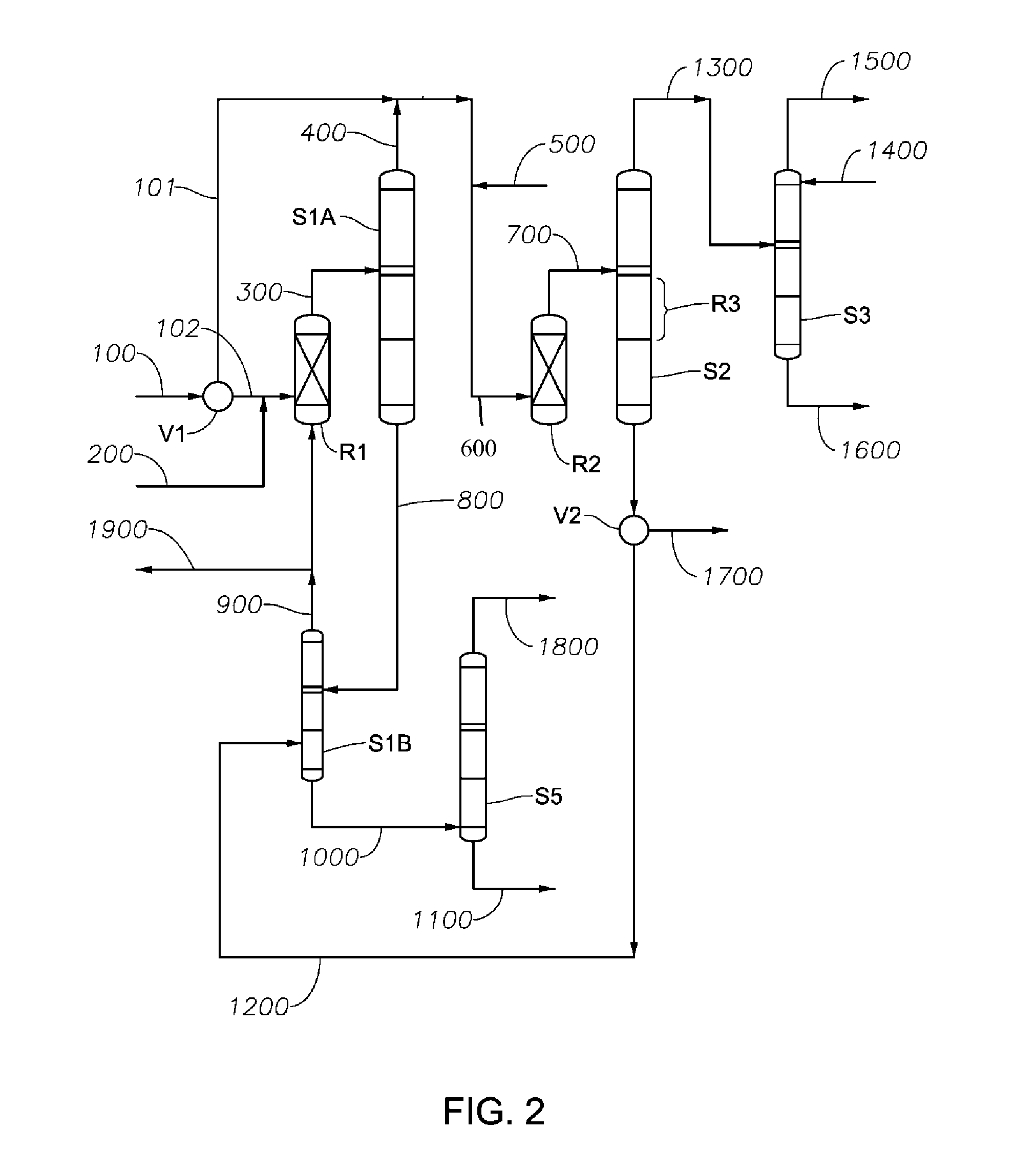Hydrocarbon Conversion Process
a technology of hydrocarbon conversion and conversion process, which is applied in the direction of hydrocarbon preparation catalysts, ether preparations, organic chemistry, etc., can solve the problem of difficult separation of isobutene from the mixture by distillation
- Summary
- Abstract
- Description
- Claims
- Application Information
AI Technical Summary
Benefits of technology
Problems solved by technology
Method used
Image
Examples
Embodiment Construction
[0024]The invention is based in part on the development of a process and apparatus for simultaneously producing mono-unsaturated oligomers of order 2 of C3+ olefins (“di-C3+ olefins”) and C4+ oxygenate from a feed comprising C3+ olefin, and optionally decomposing at least a portion of the oxygenate to produce C4+ iso-olefin. The process can be operated to produce di-C3+ olefins and C4+ oxygenate (e.g., diisobutene and MTBE) in a broad molar ratio range, such as from about 0.01 to about 100, or from about 0.1 to about 10 (di-C3+ olefin:C4+ oxygenate). It has been observed that the relative commercial demand for di-C3+ olefin, C4+ oxygenate, and (optionally) C4+ iso-olefin can vary significantly in response to gasoline blendstock octane requirements, which are filled by components such as diisobutylene and MTBE and isobutylene demand for producing butyl rubber or for spot commodity markets. The invention fulfills the need for adjusting the product ratios by providing an operator of a ...
PUM
| Property | Measurement | Unit |
|---|---|---|
| pressure | aaaaa | aaaaa |
| temperature | aaaaa | aaaaa |
| pressure | aaaaa | aaaaa |
Abstract
Description
Claims
Application Information
 Login to View More
Login to View More - R&D
- Intellectual Property
- Life Sciences
- Materials
- Tech Scout
- Unparalleled Data Quality
- Higher Quality Content
- 60% Fewer Hallucinations
Browse by: Latest US Patents, China's latest patents, Technical Efficacy Thesaurus, Application Domain, Technology Topic, Popular Technical Reports.
© 2025 PatSnap. All rights reserved.Legal|Privacy policy|Modern Slavery Act Transparency Statement|Sitemap|About US| Contact US: help@patsnap.com



